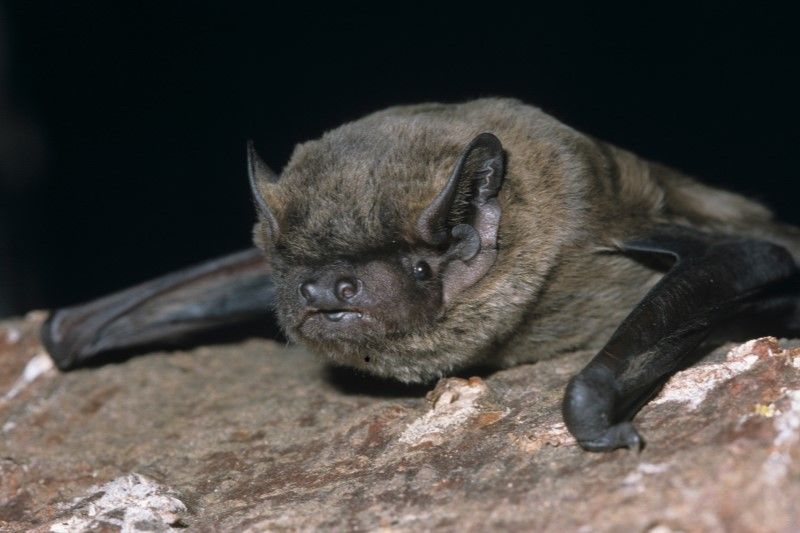Leisler’s bat

Status
Native and widespread; scarce in Great Britain, but common in Ireland
Population
Unknown
Scientific name
Nyctalus leisleri
Leisler’s bat is similar to the noctule but is slightly smaller, with longer fur. It has dark, golden brown fur that is particularly thick around its upper back, so that it resembles a lion’s mane. It is a particularly noisy bat and can be heard just before it emerges at sunset, especially on hot, summer evening. They fly high and fast, and dive to catch flying insects. They sometimes feed on insects attracted to streetlights in quiet areas. In summer, the colonies are very mobile and often move to new roosts. Leisler’s bats are migratory: one individual is reported to have travelled over 200km in Britain.
Wingspan: 26 – 32cm
Weight: 12 – 20g
Lifespan: Up to 10 years
Reproduction
Mating occurs from late summer through to autumn. Males call to females, either from a perch or while in flight, with a song that is audible to humans, and acquire a harem of several females. In summer, females then form large maternity roosts in tree holes and each gives birth to a single pup in mid-June. The young are weaned and become by six weeks.
Diet
Flies, moths, caddis flies and beetles
Habitat
Pasture and woodland, as well as urban parks.
Summer roosts
Mainly old woodpecker holes or natural cavities in mature trees. They are also found roosting in (old and new) buildings and in bat boxes.
Winter roosts
They are rarely seen in winter but are thought to hibernate in tree holes and occasionally in crevices in caves and tunnels.
Predators
Probably long-eared owls and kestrels.
Ultrasound
Echolocation calls range from 15 – 45kHz and peak at 25kHz. On a bat detector, their calls make a distinct ‘chip chop’ sound.
Status and conservation
GB Red List: Near Threatened (NT).
Population size and distribution
UK population unknown. In England, they mainly occur in central and southern counties. Only a single record is known from Wales. Ireland is a stronghold of the world population and noctules are the third most common bat species (after pipistrelle and brown long-eared bats) here.
Did you know?
Leisler’s bats have thick fur along their forearm, which partly covers their shoulders, and used to be called the hairy-armed bat.
